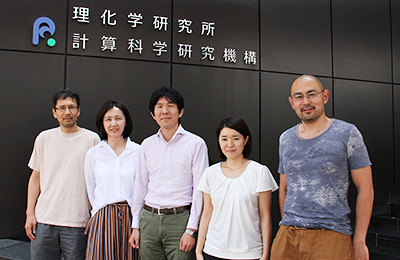For the last several decades, Lagrangian finite element methods, which use deformed-mesh, have been the de facto standard for solid/structure simulations. This method can track the surface of solid with high accuracy and compute constitutive relation of solid with ease, since a geometric domain of the solid is spatially discretized using unstructured mesh which conforms to the deforming solid.
On the other hand, an Eulerian finite element method for solid/structure mechanics was proposed in the early 1990s. This method uses spatially fixed mesh and thus allows solid material to flow through the mesh. In this context, compared to Lagrangian finite element methods (Deformed-mesh methods), Eulerian finite element methods (Fixed-mesh methods) are attractive for computing large deformation problems, computing fracture problems, and generating computational mesh easily.
Utilizing the above advantages, Eulerian finite element methods have been applied for bullet impact analysis, solid-fluid interaction analysis, soft adhesive analysis, and soft resin analysis. However, the computational challenges have been their expensive computational cost, the diffusion of the solution due to the advection, and the modeling of contact interfaces. In my presentation, I will explain the past, present and future studies of fixed-mesh methods for solid/structure mechanics.













